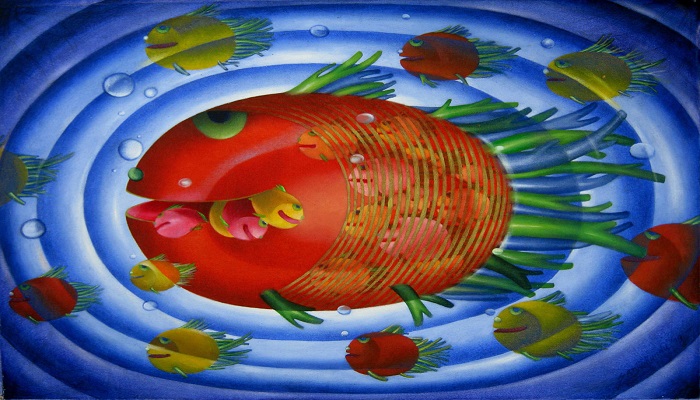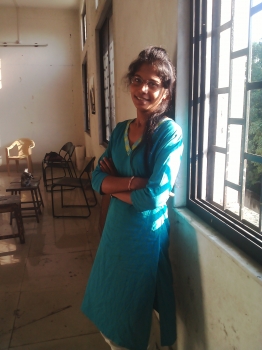
While you do some shopping, learn about creating your very own Indian oil paintings. Learn the tips and tricks to mix oil colors to create Ganesha Paintings seen never before! One of the most difficult components of learning to paint with acrylics or oils is color mixing. It's simple to make murky or lifeless colors that depress a painting. The following color mixing tips can assist you in creating both powerful and subtle color combinations.
So let’s start.
Mixing Of Flesh colors in Indian Oil Paintings
When painting flesh tones, the artist's dilemma is that the shadows are frequently muddy and unconvincing. Here are some suggestions, limiting ourselves to only white flesh in this case because dark skin has an entirely other range of colors. Titanium white, yellow ochre, light red, Indian red (now known as Red Oxide), alizarin crimson, cadmium red, cadmium yellow light, and cobalt blue are the colors I employ.
In general, I make a normal flesh hue by mixing 5 parts white, 1 part yellow, and half a part red; the proportions are approximate. I'd use Titanium White, Yellow Ochre, and Indian Red for a cool skin tone, and Titanium White, Cadmium Yellow Light, and Light Red for a warm flesh tone. Replace Indian red with alizarin Crimson for a cold tint and light red with cadmium red for a warm tint as variations on this theme.
If the shadows are really dark, a blend of Indian red and Cobalt blue can be used to give a cool mauve color that is excellent.
In shaded regions, don't be afraid to utilize blues, purples, and mauves. The regions of the face that are in shadow or further away should be painted in cold tones, while the areas that are closer to you should be painted in warm tones. Obviously, this will differ depending on lighting, angles, and other factors. Indian Red can be used to define facial lines, but depending on the overall color scheme, it may be toned down.
Avoid combining flesh colors with blue since they will become muddy. Avoid earthy brown colors (such as burnt umber) since they too become murky when blended with skin tones.
Mixing Of Grey While Creating Indian Oil Paintings
The grey cannot be created by merely combining black and white together to offer the artist the nuance required in oil/acrylic painting. As an example, consider the following. Take the three primary colors, Red, Yellow, and Blue, and mix them together. The red, yellow, and blue you use will alter the outcome, so explore. Make small batches of paint and try to blend them evenly. You'll wind up with a sludgy color; add a little white and you'll have a grey. Add a little more blue for a cool grey, a little more red for a warm grey, and so on.
There are an infinite number of 'greys' that can be created; for example, using alizarin crimson as the red produces a different grey than using vermilion. If you want a more complex method, consider determining whether the color you're using has a cool or warm tone, and then mixing the cool or warm tones. Permanent Rose, for example, is a cold red that is slightly bluish; combining it with ultramarine and a cool yellow, such as lemon yellow, will result in a less sludgy grey.
A great exercise in color mixing would be to create an entire painting using only greys, with cool greys in the background, warm greys in the front, and a wide spectrum of grey tones in between.
Mixing Tips for General colors
The following are just some ideas you might want to think about:
Try blending Ultramarine or Phthalo Blue with Burnt Umber if you need a black that isn't as flat as Mars Black. This creates a 'black,' which can be utilized in the background to make a cool black, or in the foreground to generate a warm black, with more brown than blue. Remember that using black from a tube in both the foreground and background of a painting will flatten it. This technique works well with both oil and acrylic paints, as well as watercolors.
Have you ever struggled to decide which color to use in the background of a painting? Choosing a complementary color to the prominent color of the foreground is one approach that can occasionally work nicely. On the color wheel, complementary colors are opposite each other. As a result, red complements green, blue complements orange, and yellow complements purple.
If you mix the improper reds, blues, and yellows together, it's quite easy to generate murky secondary colors like orange, green, and purple. Undertones can be found in colors, such as French Ultramarine, which has a red undertone, and Permanent Rose, which has a blue undertone. When these are combined, a pure purple is produced.
Because Prussian Blue has a green undertone, mixing it with Permanent Red will result in a murky purple. If you combine the correct colors together, the following colors can make clean secondary colors; experiment, but keep in mind that these aren't the only ones:
-
Cadmium Yellow Hue, Cadmium Red Hue, French Ultramarine, Phthalo Blue, Permanent Rose, Cadmium Lemon Hue are examples of oil colors.
-
Cadmium Yellow Hue, Vermilion Hue, French Ultramarine, Winsor Blue, Permanent Rose, Cadmium Lemon Hue are acrylic colors.
-
Winsor Yellow, Cadmium Red, French Ultramarine, Winsor Blue, Permanent Rose, Lemon Yellow, Winsor Yellow, Cadmium Red, French Ultramarine, Winsor Blue, Permanent Rose, Lemon Yellow, Winsor Yellow, Cadmium Red, French Ultramarine
Wrap up:
While you shop for Ganesha paintings for your home and office walls, the artists that live inside wake up! This is when you get to try your artistic skills and create an art piece that fulfills your desire. Such artwork can also help you sell paintings online with Indian Art Ideas.
Get some amazing tips from the experts with us. You can also buy various kinds of Indian oil paintings, Ganesha paintings, contemporary art, etc. with us, you can also sell your art online as an artist.
So, while you explore more tips and tricks with us, grab in the best Indian oil paintings for yourself from Indian Art Ideas. Enhance the essence of your house and create a corner of peace and beauty for yourself.





















